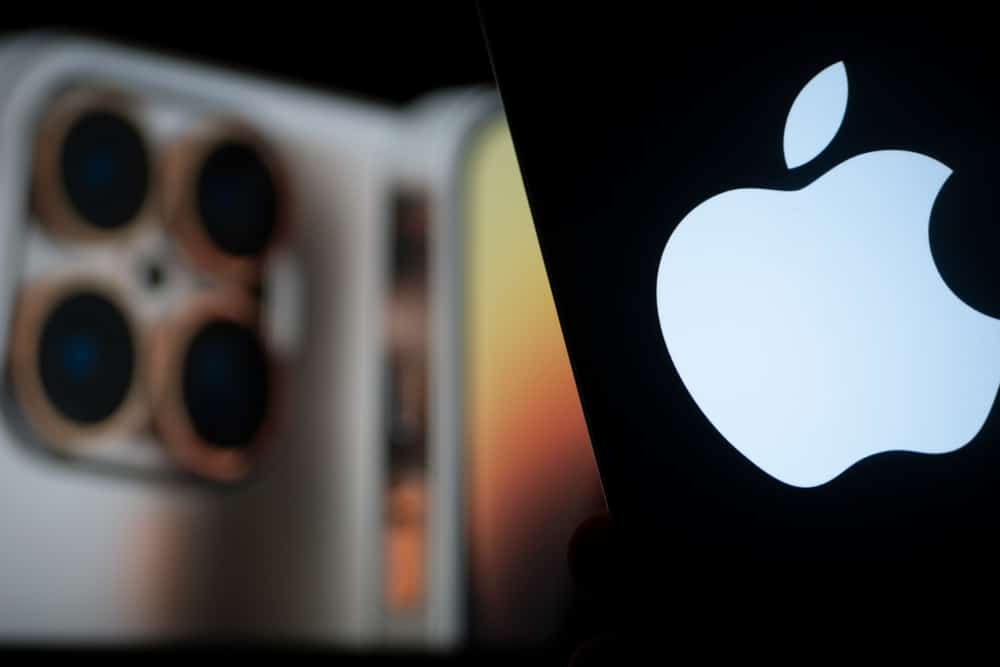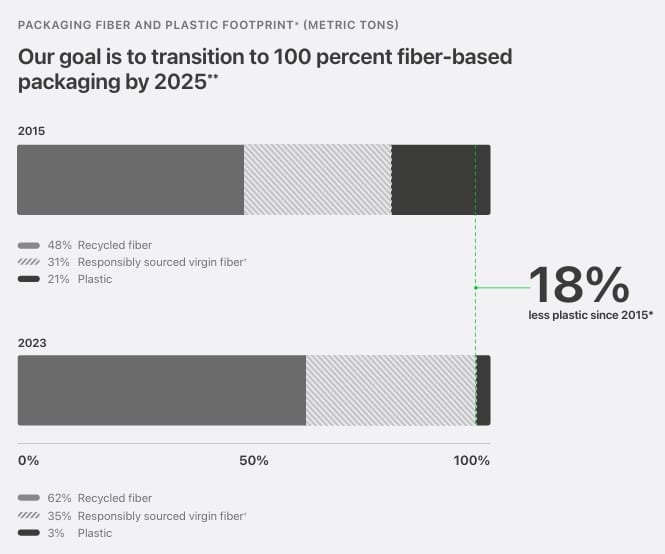From creation to disposal, Apple has always taken responsibility for its products in all aspects. This time the brand-new iPhone 16 lineup has a 30% reduced carbon footprint. Their latest Product Environmental Report emphasizes sustainability and showcases how smartly they have reduced climate impact, conserved resources, and used safer materials in their design and aesthetics.
Eco-Conscious Design with 30% Recycled Materials
The first step to sustainability with the iPhone 16 and iPhone 16 Plus is incorporating over 30% recycled or renewables in its design. The company aims to eventually source only sustainable and carbon-free materials while maintaining responsible sourcing of primary resources.
Significantly, the company enforces strict standards for suppliers of tin, tantalum, tungsten, gold, cobalt, and lithium through third-party audits. By 2025, it plans to use 100% recycled cobalt in batteries, 100% recycled tin for soldering, and 100% recycled rare earth elements in magnets. Apart from this, they prioritize product safety by restricting harmful substances beyond legal requirements.
Sustainable Materials Packed Inside iPhone 16:
- Aluminum: 85% recycled aluminum in the enclosure and 100% recycled aluminum in the thermal substructure. This reduced product emissions by 8%.
- Gold: 100% recycled gold in the USB-C connector, cameras, and multiple circuit boards.
- Cobalt and Lithium: 100% recycled cobalt in the battery and 100% recycled lithium in the battery cathode.
- Copper: 100% recycled copper in multiple printed circuit boards, 100% copper wire in the Taptic Engine, and 100% recycled copper foil and wire in the inductive charger.
- Rare Earth Elements: 100% recycled rare earth elements in all magnets, making up 97% of the device’s total.
- Steel and Plastic: 80% recycled steel in various components and at least 50% recycled plastic in multiple parts, including the antenna lines made from upcycled plastic bottles.
Shrinking the Carbon Footprint of iPhone 16
Apple’s latest report reveals a 30% reduction in lifecycle greenhouse gas (GHG) emissions for its iPhone 16 Pro 128 GB and iPhone 16 Pro Max 256 GB models. The most significant factor in reducing the greenhouse gas (GHG) footprint of the new iPhone is the increased use of low-carbon electricity within Apple’s supply chain. Simply put, they made it possible by using electricity only from the grid, without any other clean energy source.
Meanwhile,
- The carbon footprint of iPhone 16 is 61 kg CO2e for the 256GB model and 64 kg CO2e for the 512GB model
- The iPhone 16 Plus has a footprint of 74 kg CO2e for the 256GB configuration and 77 kg CO2e for the 512GB model
Source: Apple
Moreover, Apple credits its suppliers for significantly reducing product emissions by implementing low-carbon solutions. These exclusive efforts have collectively cut emissions by over 20%, highlighting Apple’s commitment to improving its environmental impact with cleaner energy solutions. Notably, last year the company’s Supplier Clean Energy Program helped avoid 18.5 MMT CO₂e emissions.
Their latest sustainability report highlighted that Apple, to date achieved over a 55% reduction in CO₂e emissions across its carbon footprint since 2015.
Pioneering Plastic-Free Solutions in Packaging
Apple boasts of its packaging! Not only is it aesthetically classy but it is 100% sustainable. They use 100% fiber-based packaging, eliminating plastic except for necessary inks, coatings, and adhesives. Every year they are improving packaging by optimizing recycled content, minimizing packaging volume, and using fewer materials overall.
By 2025, Apple wants to go 100% plastic-free for all its packaging materials. Some notable work and efforts that go behind the entire packaging process are:
All wood fibers in the packaging are either recycled or sourced from responsibly managed forests. This guarantees that any new wood fiber used is balanced by preserving or creating an equal amount of forested land. Apple practices this ritual to maintain the health of forests, which are essential for air and water purification.
The redesigned packaging for the iPhone 16 and iPhone 16 Plus is 8% smaller and more efficient compared to previous models, such as the iPhone 15 and iPhone 15 Plus. They say that this size reduction allows for more boxes to fit on each pallet, thereby reducing the number of shipping trips required.
Source: Apple
Additionally, Apple is prioritizing lower carbon-intensive shipping methods, such as rail and ocean transport, and over-air freight to further reduce emissions associated with product delivery.
So,
What is Apple, after all? Apple is about people who think ‘outside the box,’ people who want to use computers to help them change the world, to help them create things that make a difference, and not just to get a job done – Steve Jobs



